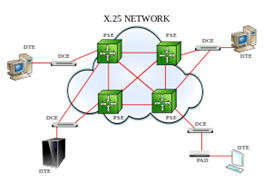In a recent post, I talked about how lack of perspective about your competition is a sure path to lost credibility. Additionally, there is a CREDABILITY problem that is less obvious and more common.
Today, anyone who watches television has heard of the cloud and most are benefitting from it. PCs, mobile phones, music players, televisions, home security systems, etc., all use the cloud and, while most think it’s a new thing, the technology has actually been around for a while.
In the fall of 2008, the cloud was a hot topic for all sellers and users of technology. Customers demanded to know how our technology would enable them to benefit from the cloud in comparison to. During that fall, I was traveling in Asia, accompanied by one of our cloud-computing subject-matter-experts (SME). Our goal was to present the benefits of Microsoft’s cloud-solutions.
We had excellent technology that our SMEs were proud to talk about. The main presenter was a product manager who had just earned his Master’s Degree in Computer Science. He definitely knew more about today’s cloud computing technology than most – we were fortunate to have him join us.
During a presentation with executives representing an important Asian customer, he made multiple references to the cloud being new and that our technology offered a “first” at many things. He spoke of our innovation in the areas of data security, disaster recovery and data-sharing.
All was great until an executive asked, “Do you really mean that you’re the first to do cloud-computing?” The customer asked it in such a way that told me he was going to challenge us. Our SME answered, “Well cloud-computing is all new so yes, a lot of our innovations are a first.” The conversation proceeded:
 Customer: “We’ve been doing cloud computing almost twenty years. Tell me why your technology is better than what we have.”
Customer: “We’ve been doing cloud computing almost twenty years. Tell me why your technology is better than what we have.”
SME: “Cloud hasn’t been around that long.”
Customer: “Have you heard of X.25 or TCP/IP?”
SME: “Those aren’t cloud technologies.”
In the late 1980s we used the cloud metaphor to draw X.25 network architectures such as in the example below. To that customer executive, and many other IT veterans, cloud computing had been around for a long time and our SME had lost credibility by not acknowledging that.
My team and I hadn’t properly prepared our SME. The customer executive and I had similar industry backgrounds so I could have forecasted this discussion. However, in the real world we don’t always perfectly anticipate everything and when that happens we have to take accountability and make adjustments.
Given the Asian culture, I apologized for not having my team sufficiently prepared and turned the presentation to a discussion to the areas that were most important to the customer. We ended up learning a lot from that executive and his team. The SME came away better equipped to handle these kinds of discussions in the future. Most importantly we were invited back and the customer eventually adopted our cloud computing technologies.
What do we see when we lack historical perspective? – Customers will be confused, disagreeable or both. At best, customers will express their concerns. At worst, they will shut down and stop listening.
Why does this happen? – The basic process of education is to add additional knowledge to existing knowledge. This is why the first week of school always starts with a review of what we learned previously. Educating customers on new offerings is no different. When we don’t know enough about where they’ve been and where they are, we cannot effectively and credibly propose new ideas. It’s too much of a leap.
What are the best next actions to address the Why?
- Know company & industry history – It’s important to know how the customer is currently operating in the area where you’re proposing improvement.
- Know personal history – It’s equally important to know the past experiences of the decision-makers so that you have context for how they’ll assess your proposal. For instance, in the cloud situation, we were selling to someone whose career was in data security. If we had been presenting to someone whose background was in marketing, we would have had a different meeting.
- Confirm your knowledge with your customer – No amount of research allows us to know exactly how the customer perceives their issues and needs. Direct confirmation is best. It’s also natural human behavior to engage with people who show respect for one’s knowledge.
Research history around both company and personal issues. Amplify your desire to learn more by confirming your knowledge through dialogue with your customer. When surprised, take accountability and make adjustments. You’ll avoid lost credibility while simultaneously exercising the CREDABILITY needed to win more sales.
©2014 Rick Wong – The Five Abilities, LLC

